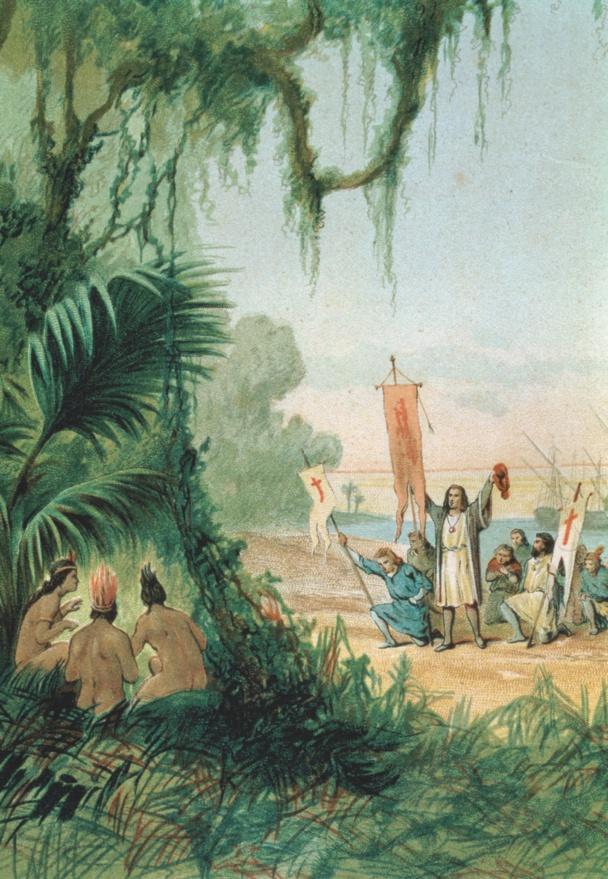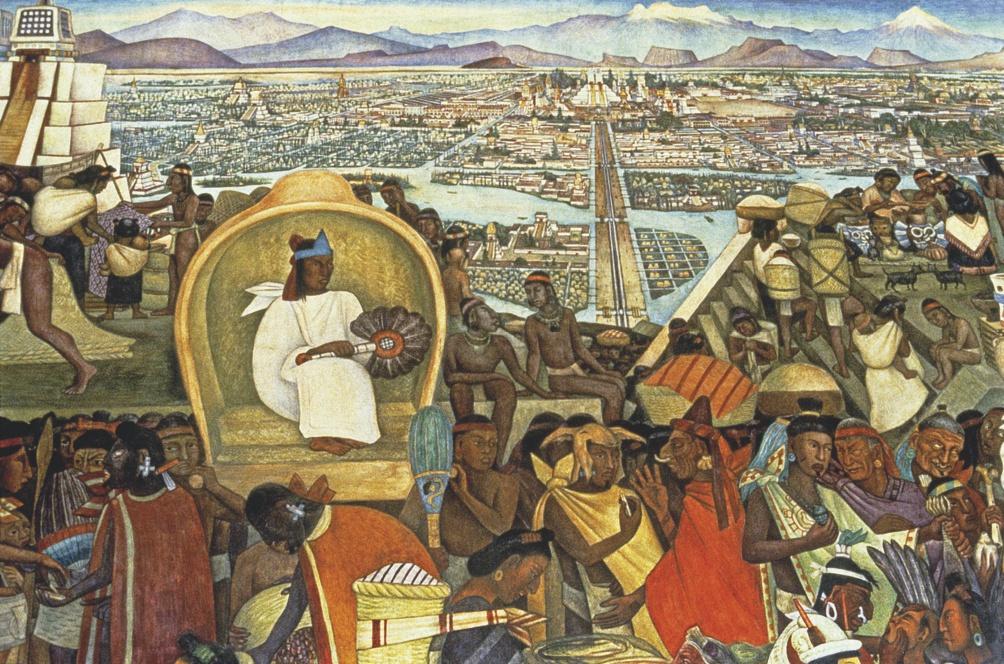
5 minute read
Sailing beyond the horizon
the renaissance age of explorers and reformers (1500-1600)
America, or the New World
Petrus Plancius (1552-1622) was born in Flanders but mainly worked in Amsterdam. He studied to be a clergyman but he is best known as a cartographer and navigator. He taught sailors how to use maps and nautical instruments. He then commissioned them to report new sightings of unknown territories. Their reports enabled him to perfect his maps. He also instructed sailors to tell him about the stars they saw in the southern hemisphere. You can tell Plancius was interested in the stars because his map includes two discs that show the zodiac of the northern sky and the southern sky. He did not know much about the southern sky. The edges of the map are filled with pictures of the various continents: Europe, Asia, Africa and America and the peoples and animals that live there. The use of the compass and other navigational instruments had made voyages of discovery possible. Plancius did not print such richly illustrated maps himself, but he did provide the knowledge on which they were based.
The maps appeared in a popular series of picture books about the New World, which had only just been discovered. These picture books were published in Northwestern Europe at the end of the sixteenth century. The series was called Les Grands Voyages and was produced to tell a wide readership about the great sea expeditions of the age. It was translated into several languages, so that Europeans of different nationalities could learn about the discoveries made in the previous century. What did that new continent look like? Who lived there? What plants and trees grew there? Travel journals and detailed engravings showed how these foreign people lived, the regions they inhabited and how European explorers and conquerors had discovered and conquered these distant territories. For many Europeans this was the first introduction to the world on the other side of the Atlantic. A New World.
Discovering a New World
In August 1492, maritime explorer Christopher Columbus set sail from Spain with three ships. Columbus believed he could reach Asia by sailing west, something that until then no one had succeeded in doing. After sailing for seventy days, Columbus sighted land... was this China or
India? He went ashore, planted the Spanish flag and encountered the local population. In his journal he wrote that the people he met seemed to be lacking in everything. They were all naked and those I saw were young and well-built. Their hair, coarse as a horse’s tail, was cut short and combed towards the forehead at the front, except for a small section at the back which they leave long. They paint their skin. They do not carry weapons and are not familiar with them. When I showed them swords, they took hold of the blade and cut themselves. I think it will be easy to convert them to Christianity, because they do not appear to have their own religion.” He called these people ‘Indians’. Only later, when Columbus and other explorers had made several voyages to the west, did it become clear that this was not Asia, but another, previously undiscovered continent.
Hispanic America
After Columbus discovered America in 1492, Spain wanted to take possession of this territory. There were riches to be found, especially gold, and the population could be converted to Christianity. New expeditions were planned and armed soldiers were shipped from Spain to conquer the indigenous peoples. Among them were the Aztecs, who lived in Central America. The Aztecs had nothing but simple weapons to defend themselves against the Spaniards, who were armed with iron swords and guns. The Aztecs had never seen heavily armed fighters on horseback and they were in awe of the Spanish horsemen. When a rider dismounted, they thought it was a huge monster splitting in two. In 1521 the Spaniards defeated the Aztecs and destroyed their capital city. The same fate awaited the Incas in South America. By around 1540 the Spaniards ruled all of Central and South America. The Spaniards suppressed the culture of the local peoples and their belief in many gods. Instead, the indigenous peoples adopted the faith of the Spaniards, and were sometimes forced to do so.
The Spanish conquerors changed American society. But the imports of gold and silver and the new trading opportunities also changed Europe. Every year ships brought valuable cargoes back to Spain. The Spaniards used these riches to finance wars against the Netherlands, France and the Ottoman Empire. The spread of Spanish power in America is an example of European overseas expansion.
Portuguese trading empire in Asia
Another example of European expansion is the trading empire that Portugal established in Asia. It was the Portuguese who first began to explore the world outside Europe. They went in search of sea routes to India so that they could buy spices directly instead of relying on Arab merchants. Once they had discovered the route around the Cape of Good Hope, the southernmost tip of South Africa, and were able to sail to India, the Portuguese had to fight their way into an existing trade network in Asia. It was not possible for them to conquer vast territories so far away from the motherland but the Portuguese did secure a share in the spice trade with the islands in the Indian Ocean and the countries around it. They used force to impose trade relations on local rulers. To protect their trade, the Portuguese established fortified trading posts along the coast. This resulted in a Portuguese trading empire in Asia.
The importance of European expansion
The discoveries made by the Portuguese and the Spaniards meant that oceans were no longer an obstacle but a gateway to new markets and different cultures. Regular contact between Europe and peoples in other parts of the world was now possible. The European expansion led the Portuguese and the Spaniards (and later the British, the French and the Dutch) to claim ownership of parts of Asia and America (colonies). This created trade on a global scale: Western European ships carried cloves from Asia, transported African slaves to America and sailed into European ports carrying gold and silver.
New resources were tapped, new peoples were discovered and sometimes exploited and conquered. Our knowledge of the world and shipping increased rapidly. These contacts also changed how Europeans saw the world: their travels made them better at mapping the world and also altered their way of thinking. People began to question the certainties of the past. What did they actually know of the world? Their thinking was no longer centred on the world order as stated in the Bible and taught by the church. Man himself, as critical thinking being, became increasingly important.
Significant Developments
1 The beginning of European overseas expansion.
2 The changing Renaissance view of the world and mankind.
Main Question
How did the discovery of America and the founding of a trading empire in Asia change the societies of Europe and America?
Subquestions
1 Why did Europeans go in search of new trade routes overseas?
2 How did the Portuguese establish a profitable trading empire?

3 How did Spain take possession of America?
4 How did Spain change American society?
5 What effects did the discovery of America and the trading contacts in Asia have on Europe and the worldview of the Europeans?









